Scope
The Engine Control Research
Laboratory at UH focuses on research, education and technology transfer aspects
involving the regulations, optimization, control, monitoring and diagnostics
of internal combustion engine and power train systems with the overall objective
of optimizing their economy and harmful emission reduction.
Research Summary
Developing
controller design methodologies that generate production-intent engine controllers
for low emissions, improved fuel economy and optimal performance. This includes
simplified controller calibration processes (desktop calibration), improved
performance and guaranteed robustness.
Research Outcomes
*Engineering desktop and data driven tools
for (a) multivariable controller design, (b) linear/nonlinear robust controller
design, (c)gain scheduling controller design, and (d) self-calibrating controllers.
*Multivariable control for loop cooperation
in multi-objective engine air handling applications.
*Optimal integration of the engine, exhaust
aftertreatment systems, and powertrain.
*Engine/aftertreatment diagnostics &
prognostics using information synthesis and simplified models.
|
|
——————————————————————————————————————————————
Facilities
and Equipment
——————————————————————————————————————————————
| Scanning Laser Vibrometer:
The Polytec PSV-300 scanning laser vibrometer measures the vibrational
velocity at a large number of points on the surface of a vibrating
object. Measurements are completely non-contact, providing a distinct
advantage over the use of traditional accelerometers. The scanning
laser vibrometer can be used in a wide range of applications. These
include measurements of large structures, such as automobile bodies,
and of small structures such as a MEMs micromirror. Results are
presented on a monitor with a superimposed video image of the object
being scanned. There is an instant visualization of results –
contour plot, color maps, spectra, etc. The system can measure frequencies
up to 1.5MHz, and velocities as low as 0.02 ?m/sec. Measurement
data can be exported in Universal File Format for use in other applications. |
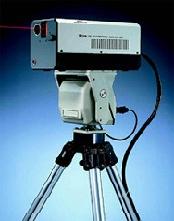 |
| LMS Mobile Data Acquisition:
The 32 channel LMS SCADAS mobile data acquisition system provides
high measurement and testing productivity. It provides up to 102.4
kHZ sampling rate per channel, 24 bit resolution, 105 dB signal
to noise ratios, and a throughput rate that exceeds 2.2 Msamples/sec.
Real time spectrum, averaged spectrum, and direct time throughput
can be measured and saved. |
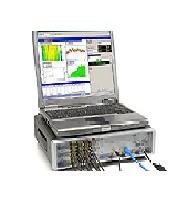 |
| DSPACE Real-Time Controllers:
The DSPACE system is used to implement real-time feedback controllers.
We have three DS1103 PPC systems, which have 36 A/D channels, 8
D/A channels and 50 bit I/0 channels. The controllers are programmed
using the Matlab/Simulink graphical user interface. |
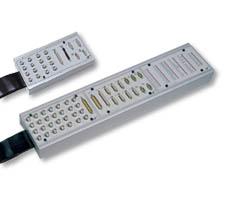 |
| TEAC Solid State Data Recorder:
The LX-10 16 channel data recorder is truly a mobile system. The
system can be powered from its rechargeable batteries, an automobile
cigarette lighter, or conventional wall power. The data is stored
locally on PCMIA Flash Memory cards, or can be recorded on the hard
disk of a PC. Data can be recorded at a 20 kHz bandwidth. The system
can be controlled using (i) buttons on the front end, (ii) a remote
control unit, or (iii) a PC. Functionality increases in going from
(i) to (iii). |
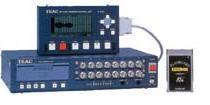 |
| Krohn-Hite 3384 Filters:
16 channels of 8 pole low pass/high pass filters with Butterworth
and Bessel filter types. The frequency range is 0.1 Hz to 200 kHz. |
 |
| Vishay Strain Gage Conditioning:
8 channels of signal conditioning for strain gages. |
|
Ling Dynamics Shaker: The
lightweight electrodynamic shaker is capable of providing 100 lbf
(440 N) of peak force excitation in a small footprint. The system
has a 1” stroke and a frequency range up to 3000 Hz. Two different
armatures are used. The first one, as shown in the picture, is used
in modal testing. The second, which has a base with 3” diameter,
is used to shake test small objects.
|
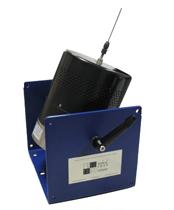 |
| Sensors and Actuators:
A large array of ICP based accelerometers, included 12 identical
triaxial accelerometers. We have several load cells to measure force.
In addition, we have a small and medium instrumented impact hammer.
Finally, we have a large number of piezoceramic “patches”,
which can be used as both an actuator (using the direct piezoceramic
effect) and sensor (using the indirect piezoceramic effect). |
|
.
Back to DSCL Home |